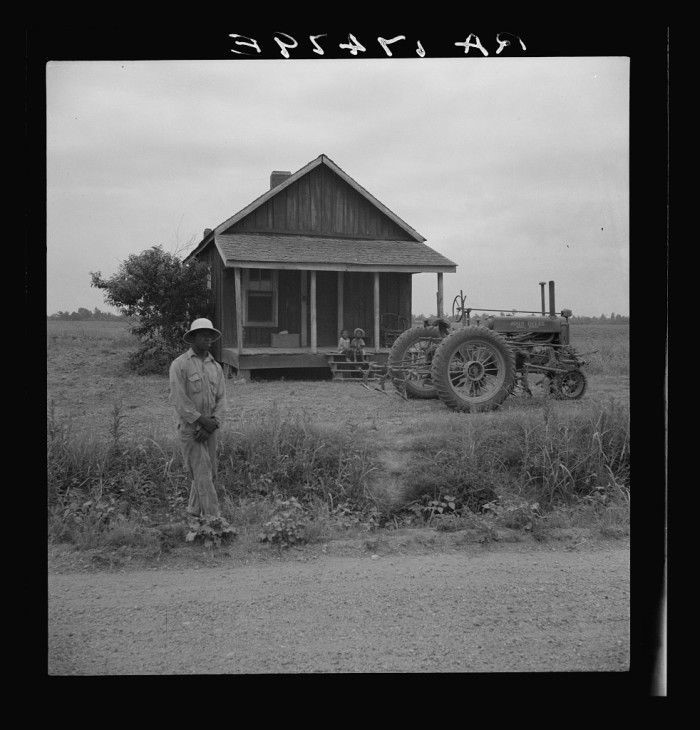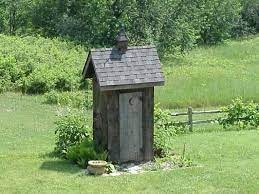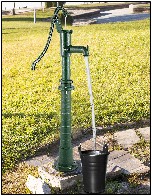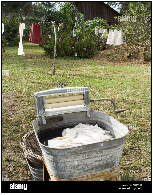Sherard History

Sherard Store
Date: 03/01/2023
Sherard is an unincorporated community located in Coahoma County,
Mississippi, United States. Sherard is located along Mississippi,
Highway 1, 6 miles (9.7 km) west of Clarksdale.
Sherard is named after the Sherard family, who cleared the land for a
plantation in 1874. The plantation originally had two cotton gins, a
sawmill, and pecan processing equipment. Sherard is located on the
former Yazoo and Mississippi Valley Railroad and in 1910 was home
to four general stores and the Memphis Shingle Company. A post office
first began operating under the name Sherard in 1890.
Sherard acreage was approximately six thousand and it was approximately
two thousand in cultivation and the remainder of it was in wooded
non-farming portions of land. About twenty acres of it consisted of what
was a railroad that ran through the property. And when the railroad
disbanded, the company allowed the owners of the land to purchase
that. The workers eventually removed the railroad tracks; however,
the residue was visible for years.
was the primary crop. But there was corn, grain such as wheat, pecans, and
soybeans later became one of the primary crops. Minnie M. Lee and her family,
those who decided to remain on the plantation, worked as farm
operators (equipment, homes & fields). The plantation owner provided the
homes and land for the farm workers. Minnie M. Lee & family, along with
most African American families, raised their fruits and vegetables. They
planted peach and pear trees and gardens that produced foods such as
watermelons, turnip and collard greens, corn, okra, tomatoes, peas, cantaloupes,
and squash. In addition to the fruits and vegetables, they raised pigs, hogs, and
chickens to feed their families.
Additional Family History Information from a family member whose
the family moved to the Sherard area during the 1870 period.
My grandfather was F_____ S____ R____, was born May 10th, 1860, on a
plantation near Livingston, AL. He was the son of Alice Whitehead, a
15-year-old slave, and Salone Sherard. So, his parents were mixed race,
white and black. Salone Sherard was one of the sons of the plantation owner.
Salone Sherard was born in 1840 and died in 1873. He was the son of
John Holmes Sherard is the person that settled the land in Sherard.
John Holmes Sherard was the original settler. He was born in North Carolina
in 1798. Now this is interesting in our history, John Holmes Sherard was the
grandson of Gabriel Holmes who was the governor of North Carolina in
1821-1824.
Again, Alice Whitehead was the 15-year-old slave of John Holmes.
She traveled with the Sherard family from Alabama. And Salone was the
father of Frank?
In 1874 at the age of 14, Frank and his mother, the Whitehead mentioned above,
traveled by wagon train from Livingston to Mississippi. They traveled with people
from the plantation and John Holmes Sherard, the youngest son of the Sherard family.
He was the one that came to Mississippi. They settled in the Mississippi Delta, on
what became the first section of the Sherard plantation. This section was named Fairview
and was a plantation that eventually grew to become 6,000 acres in size. And that
constituted the Sherard plantation. After a while, arriving in Mississippi, 14-year-old
Frank decided that he liked the Mississippi Delta and what it had to offer. So, he and
his relative, Robert Lowe, walked back to Livingston and got their cows,
then walked back to the Fairview plantation in Mississippi. They had left
their cows in Alabama because they were not sure of what they would find in Mississippi
to their liking.
Sherard land was undeveloped. Eighty percent sandy land and buckshot. They had to
clear it, in the beginning, to make it farmable.
Sherard farming in the early years, the late 1800s to early 1900s.
There were Black sharecroppers and tenants. There is a difference between a sharecropper
and a tenant. Many people might not know the difference. A tenant is a person who lives
on the farm, and you provide a house for them, and they work for you. You pay them,
and they borrow stuff from you, and at the end of the year if you owe them anything,
you do what they call a settlement with them, but most of the time you do not owe them
anything, so they don’t have anything at the end of the year. The sharecropper is an
individual who furnishes their home and furnishes their farming supplies to raise their
crops and farm the land. At the end of the farming season, they share half of the value of
their crop with you. That is why it is sharecropping. Minnie M. Lee and her families were
tenants. However, there were sharecropper families. Sharecropping and tenants started to
decline in the 1940s.
Sherard had a general store or a commissary, where the plantation owner kept everything.
Where during the year, they did not call it credit, you got things, and he wrote down in the
book what you got. You did not have any record of what you got, he kept the
books and paid and deducted monies as necessary.
Many people on the farms, at the end of the year if they were in deep debt with the
plantation owner, at the end of the year, they left overnight, they went somewhere else.
To another plantation, north or whatever, because they knew they would never get ahead.
Several Minnie M. Lee children departed for a better life.
Minnie M. Lee and her children lived on various parts of the Sherard plantation an
attended several different churches. The primary church was Sherard Baptist
church (established in 1890), that is still visible today on highway 1, for worshiping.
In addition, some attended Macedonia Church (established in 1891) on Fairview,
Sherard, Mississippi. Macedonia church is located across the highway from
Sherard Elementary School.
For Minnie M. Lee children, school attendance took a backseat to work on the farm
or elsewhere; however, her grandchildren school attendance was a high priority for a
better life and future. The majority grandchildren attended Sherard Elementary School
and most attended and graduate high school and college. Again, several children departed
north for better schooling and life.
.
The house picture above is an example of the house that 90% live in on the
Sherard, Mississippi plantation. In addition, the homes did not have bathroom
indoors. The outhouse, see above, was the toilet, located 50 to 100 meters from
the home. The plantation homes had no indoor plumbing. Families used outdoors
hand pump to collect water for cooking, cleaning, bathing, and clothes washing.
This is an abstract about Sherard, Mississippi and the early life for Minnie M. Lee
and her children residing and working there.
Prepared By: Walter Wright
Sherard is an unincorporated community located in Coahoma County,
Mississippi, United States. Sherard is located along Mississippi,
Highway 1, 6 miles (9.7 km) west of Clarksdale.
Sherard is named after the Sherard family, who cleared the land for a
plantation in 1874. The plantation originally had two cotton gins, a
sawmill, and pecan processing equipment. Sherard is located on the
former Yazoo and Mississippi Valley Railroad and in 1910 was home
to four general stores and the Memphis Shingle Company. A post office
first began operating under the name Sherard in 1890.
Sherard acreage was approximately six thousand and it was approximately
two thousand in cultivation and the remainder of it was in wooded
non-farming portions of land. About twenty acres of it consisted of what
was a railroad that ran through the property. And when the railroad
disbanded, the company allowed the owners of the land to purchase
that. The workers eventually removed the railroad tracks; however,
the residue was visible for years.
Information from one local family history that communicated insight into
when Sherard was purchased and established as a town.
Again, Sherard plantation is in a farming community located in
Coahoma County in the MS Delta. It is eight miles southwest of
Clarksdale, and approximately seventy-five miles south of Memphis, TN.
Sherard, MS became a mail stock along a section of the Illinois Central
The railroad that led from Memphis to Greenville, MS. After the railroad
creation, they sold the excess land to settlers in that area, in parcels of
forty acres. See that was the original purchase, and there is no information
about the cost of it at that time, it was not that much money involved in it,
but the original forty acres were bought from the railroad. It was through
this program that F_____ and R____ Lee R____, who were my grandparents,
purchased their first forty acres of land in Sherard in the late 1890s.
They later acquired additional land and eventually a total of total two hundred
acres, this became known as the R____ family farm.
In the beginning, Sherard farmers produced a variety of crops. Mostly cottonwhen Sherard was purchased and established as a town.
Again, Sherard plantation is in a farming community located in
Coahoma County in the MS Delta. It is eight miles southwest of
Clarksdale, and approximately seventy-five miles south of Memphis, TN.
Sherard, MS became a mail stock along a section of the Illinois Central
The railroad that led from Memphis to Greenville, MS. After the railroad
creation, they sold the excess land to settlers in that area, in parcels of
forty acres. See that was the original purchase, and there is no information
about the cost of it at that time, it was not that much money involved in it,
but the original forty acres were bought from the railroad. It was through
this program that F_____ and R____ Lee R____, who were my grandparents,
purchased their first forty acres of land in Sherard in the late 1890s.
They later acquired additional land and eventually a total of total two hundred
acres, this became known as the R____ family farm.
was the primary crop. But there was corn, grain such as wheat, pecans, and
soybeans later became one of the primary crops. Minnie M. Lee and her family,
those who decided to remain on the plantation, worked as farm
operators (equipment, homes & fields). The plantation owner provided the
homes and land for the farm workers. Minnie M. Lee & family, along with
most African American families, raised their fruits and vegetables. They
planted peach and pear trees and gardens that produced foods such as
watermelons, turnip and collard greens, corn, okra, tomatoes, peas, cantaloupes,
and squash. In addition to the fruits and vegetables, they raised pigs, hogs, and
chickens to feed their families.
Additional Family History Information from a family member whose
the family moved to the Sherard area during the 1870 period.
My grandfather was F_____ S____ R____, was born May 10th, 1860, on a
plantation near Livingston, AL. He was the son of Alice Whitehead, a
15-year-old slave, and Salone Sherard. So, his parents were mixed race,
white and black. Salone Sherard was one of the sons of the plantation owner.
Salone Sherard was born in 1840 and died in 1873. He was the son of
John Holmes Sherard is the person that settled the land in Sherard.
John Holmes Sherard was the original settler. He was born in North Carolina
in 1798. Now this is interesting in our history, John Holmes Sherard was the
grandson of Gabriel Holmes who was the governor of North Carolina in
1821-1824.
Again, Alice Whitehead was the 15-year-old slave of John Holmes.
She traveled with the Sherard family from Alabama. And Salone was the
father of Frank?
In 1874 at the age of 14, Frank and his mother, the Whitehead mentioned above,
traveled by wagon train from Livingston to Mississippi. They traveled with people
from the plantation and John Holmes Sherard, the youngest son of the Sherard family.
He was the one that came to Mississippi. They settled in the Mississippi Delta, on
what became the first section of the Sherard plantation. This section was named Fairview
and was a plantation that eventually grew to become 6,000 acres in size. And that
constituted the Sherard plantation. After a while, arriving in Mississippi, 14-year-old
Frank decided that he liked the Mississippi Delta and what it had to offer. So, he and
his relative, Robert Lowe, walked back to Livingston and got their cows,
then walked back to the Fairview plantation in Mississippi. They had left
their cows in Alabama because they were not sure of what they would find in Mississippi
to their liking.
Sherard land was undeveloped. Eighty percent sandy land and buckshot. They had to
clear it, in the beginning, to make it farmable.
Sherard farming in the early years, the late 1800s to early 1900s.
There were Black sharecroppers and tenants. There is a difference between a sharecropper
and a tenant. Many people might not know the difference. A tenant is a person who lives
on the farm, and you provide a house for them, and they work for you. You pay them,
and they borrow stuff from you, and at the end of the year if you owe them anything,
you do what they call a settlement with them, but most of the time you do not owe them
anything, so they don’t have anything at the end of the year. The sharecropper is an
individual who furnishes their home and furnishes their farming supplies to raise their
crops and farm the land. At the end of the farming season, they share half of the value of
their crop with you. That is why it is sharecropping. Minnie M. Lee and her families were
tenants. However, there were sharecropper families. Sharecropping and tenants started to
decline in the 1940s.
Sherard had a general store or a commissary, where the plantation owner kept everything.
Where during the year, they did not call it credit, you got things, and he wrote down in the
book what you got. You did not have any record of what you got, he kept the
books and paid and deducted monies as necessary.
Many people on the farms, at the end of the year if they were in deep debt with the
plantation owner, at the end of the year, they left overnight, they went somewhere else.
To another plantation, north or whatever, because they knew they would never get ahead.
Several Minnie M. Lee children departed for a better life.
Minnie M. Lee and her children lived on various parts of the Sherard plantation an
attended several different churches. The primary church was Sherard Baptist
church (established in 1890), that is still visible today on highway 1, for worshiping.
In addition, some attended Macedonia Church (established in 1891) on Fairview,
Sherard, Mississippi. Macedonia church is located across the highway from
Sherard Elementary School.
For Minnie M. Lee children, school attendance took a backseat to work on the farm
or elsewhere; however, her grandchildren school attendance was a high priority for a
better life and future. The majority grandchildren attended Sherard Elementary School
and most attended and graduate high school and college. Again, several children departed
north for better schooling and life.
.
The house picture above is an example of the house that 90% live in on the
Sherard, Mississippi plantation. In addition, the homes did not have bathroom
indoors. The outhouse, see above, was the toilet, located 50 to 100 meters from
the home. The plantation homes had no indoor plumbing. Families used outdoors
hand pump to collect water for cooking, cleaning, bathing, and clothes washing.
This is an abstract about Sherard, Mississippi and the early life for Minnie M. Lee
and her children residing and working there.
Prepared By: Walter Wright

Plantation house
This image is a replicate depicting a house on the Sherard plantation.

Outhouse or bathroom
The outhouse pictured is a small wooden structure, separate from the home, which covers a toilet hole. You utilized a shovel to dig the hole. Once the hole was filled to the maximum with human waste, they dug a second or third hole. The outhouse had no heat or running water.

Hand water pump located at homes on the Sherard plantation.
Water pumps are located at 95% of all homes on the Sherard plantation. The pump location was outdoors. Again, the homes had no indoor plumbing. Families hand to proceed outdoors to collect water for life necessities.

Tub used for washing clothing and bathing.
Sherard plantation families utilized the round tin tub for washing clothing and bathing.